FROM THE ADUR TO THE WEY
Volume 1: Brighton - Shoreham - Steyning - Horsham
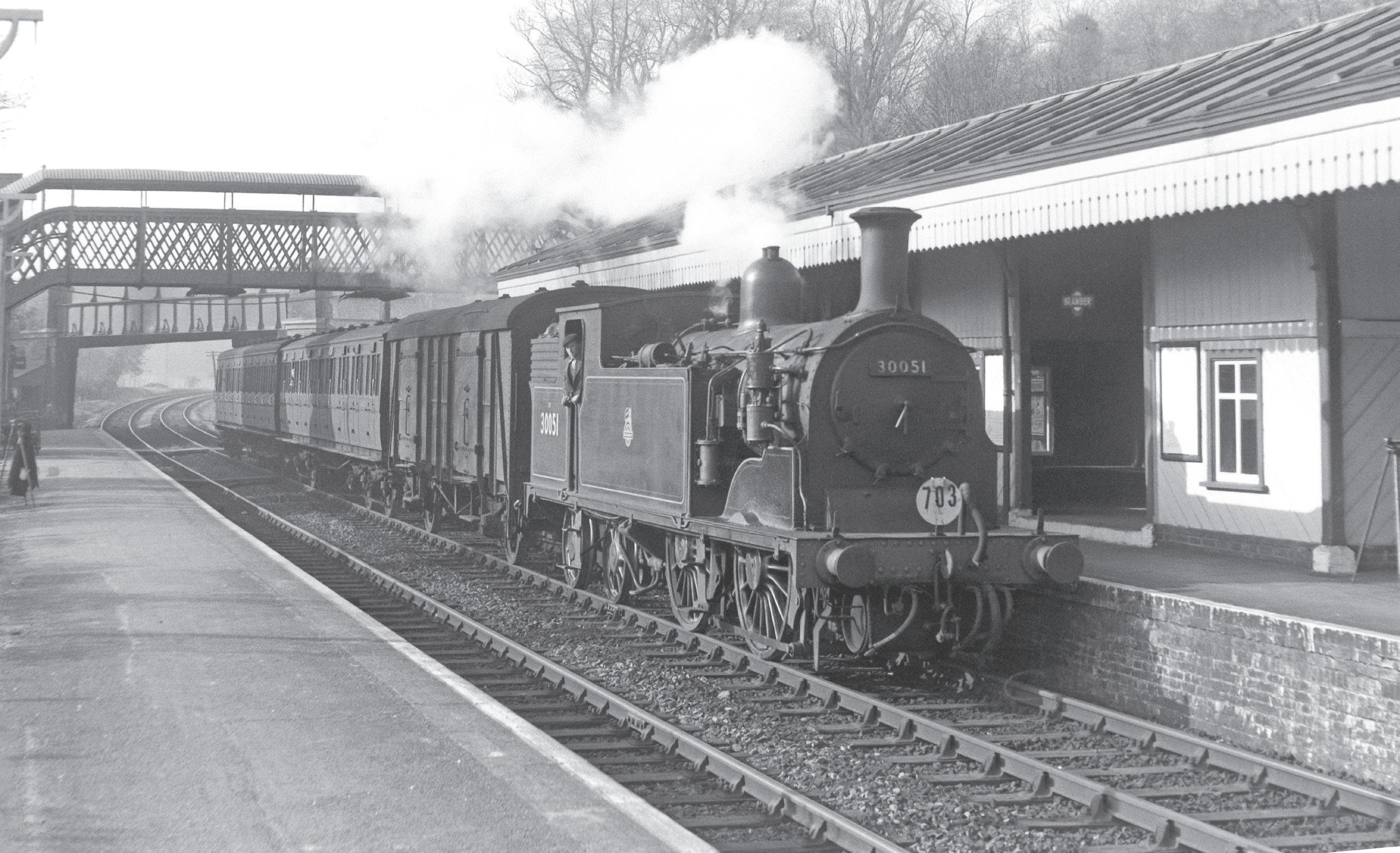
by Jeffery Grayer
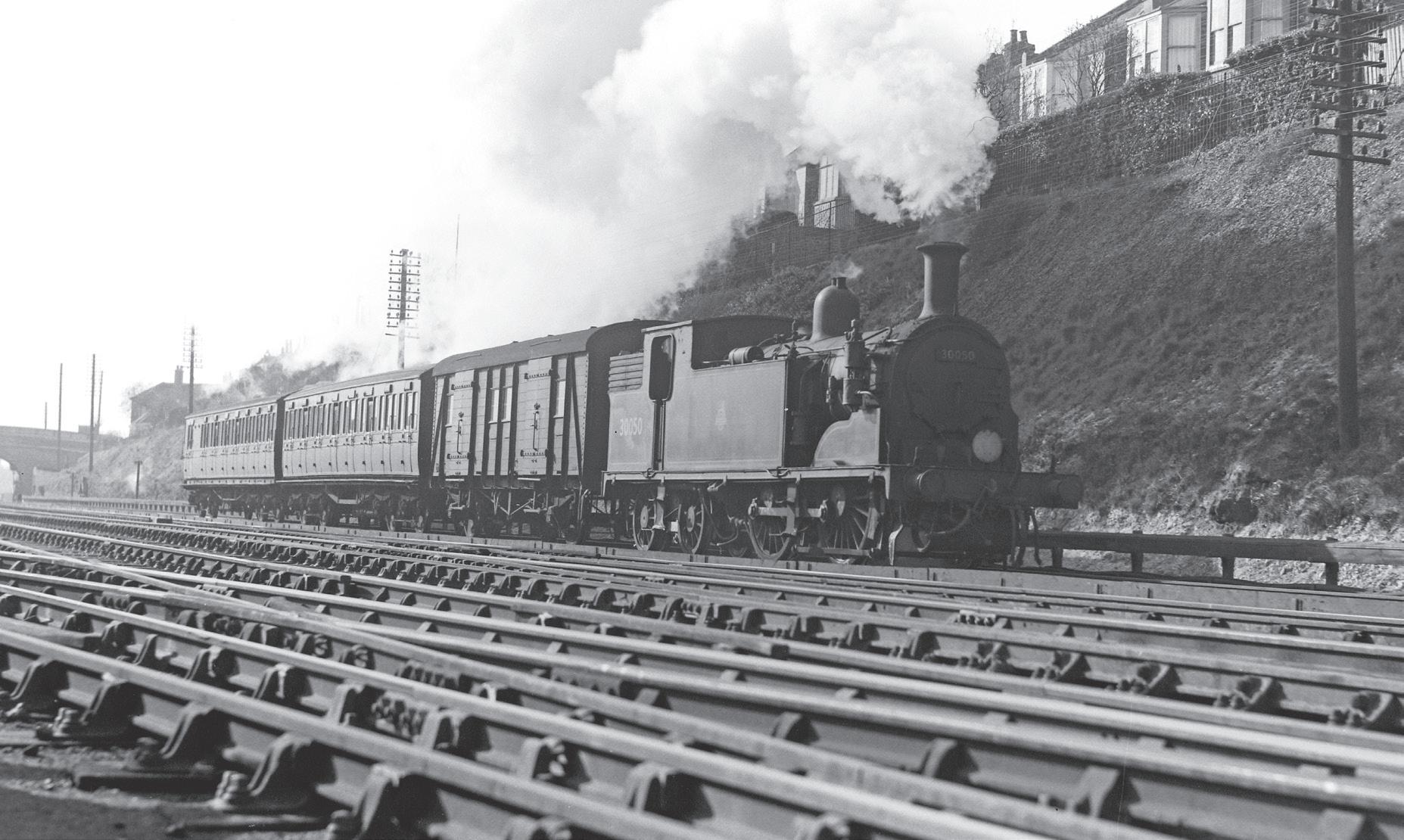
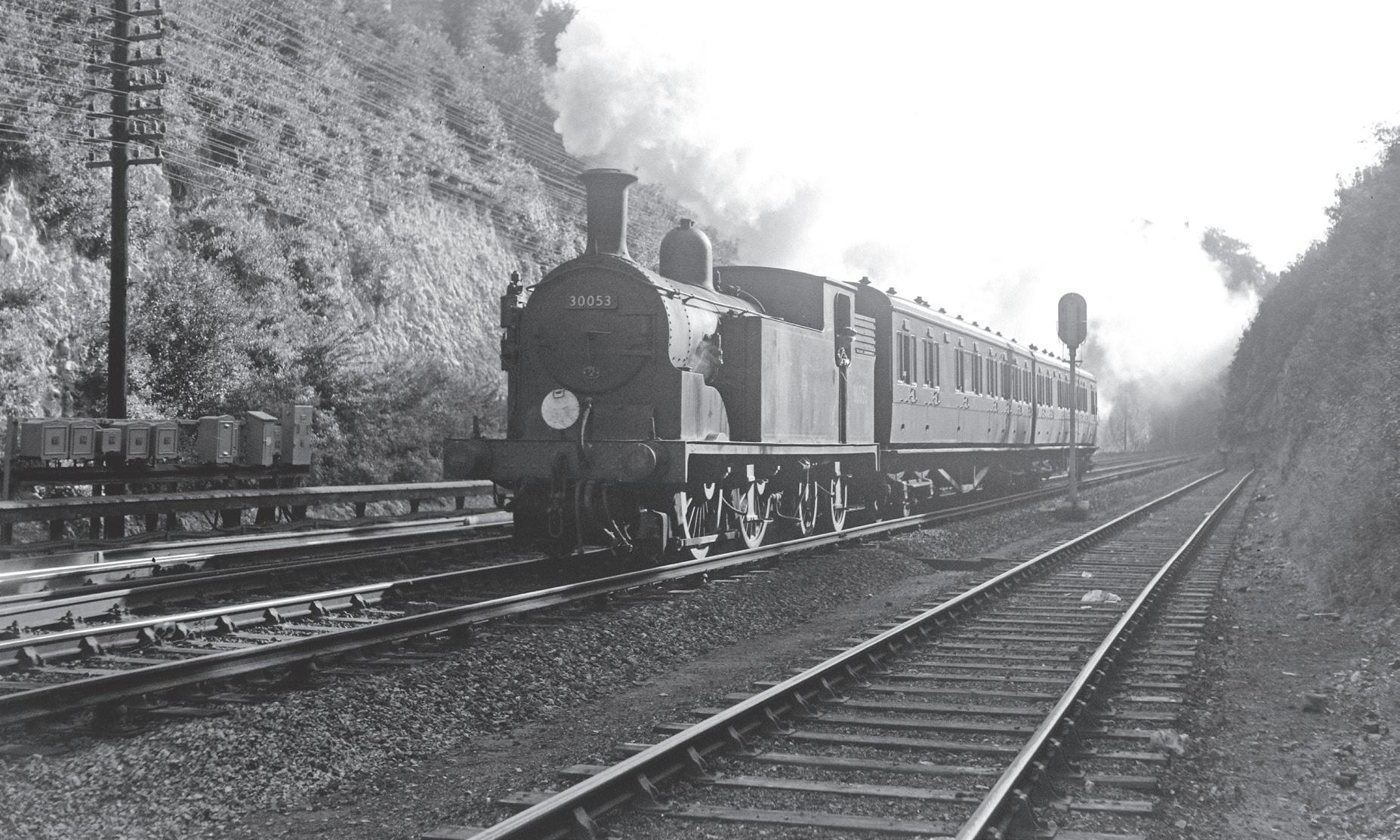


by Jeffery Grayer


Holland Road Halt was one of a number of such halts opened by the LB&SCR between Brighton and Worthing in 1905 for its new railmotor service. Served also by trains on the short lived Dyke branch and by some Horsham trains, this view taken on 1 April 1953 shows M7 Class No. 30050 passing the halt which was to close three years later in 1956. The bridge carrying Holland Road across the line can be seen in the background whilst the tracks in the foreground led to a small goods yard which was constructed on the site of the original Hove station. (Peter Hay)
On 1 September 1957 M7 No. 30053 was captured in this dramatically lit image taken in the area of the former Holland Road halt whose wooden platforms had been by this time demolished. The adjacent goods depot was to close in 1971 and the site today is occupied by the Peacock Industrial Estate. (Peter Hay)
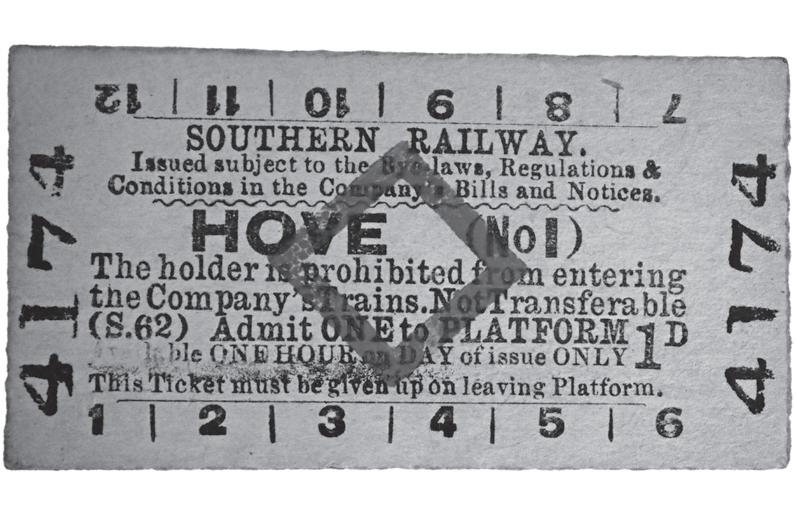
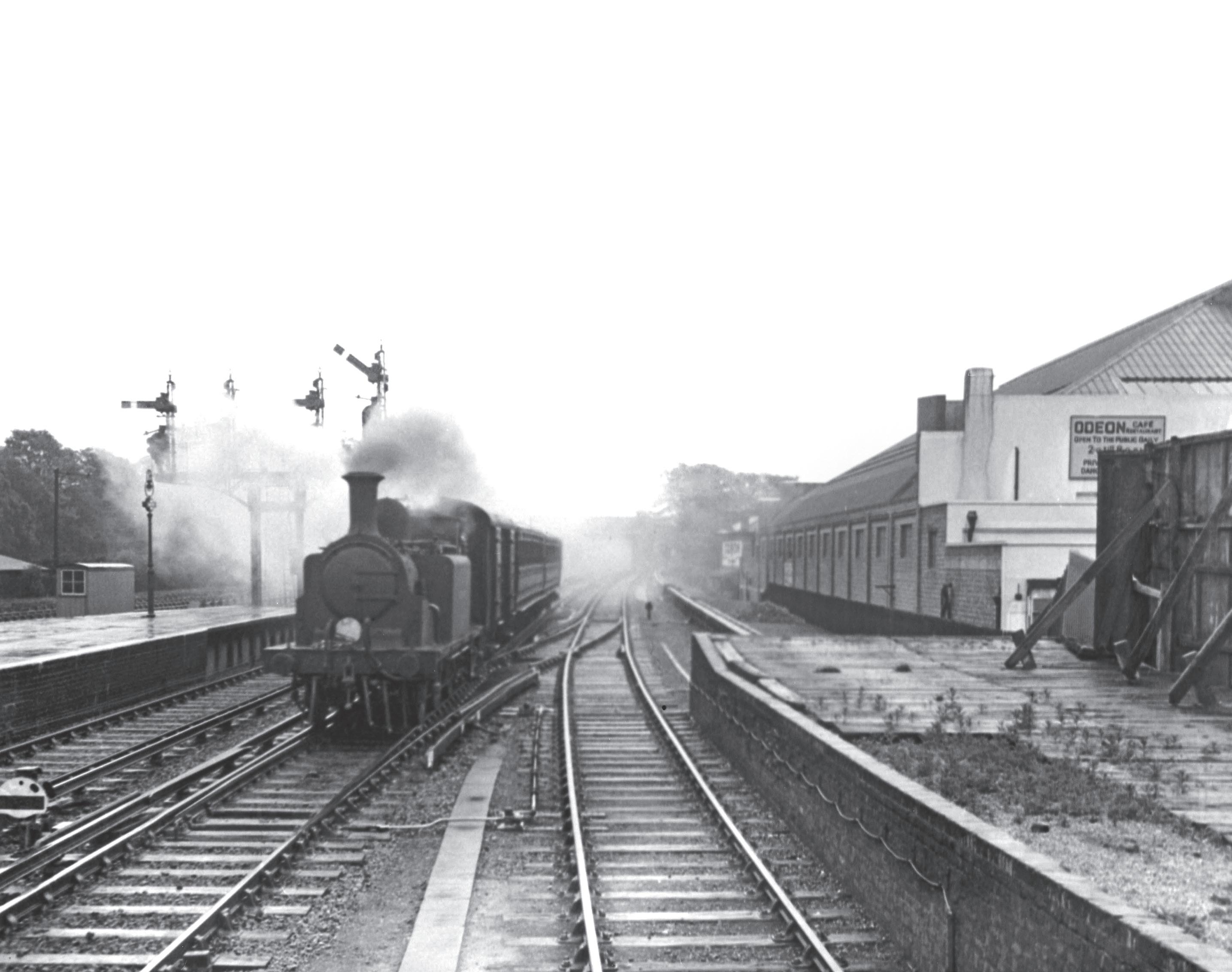
Whilst the main subject of this image is Class D1 No. 2252 running into Hove station with set No. 753 forming the 12.16pm service from Brighton to Horsham on an unrecorded date in 1949, of greater interest to the author is the building to the right with the curved roof. This was somewhat strangely situated well out of the town centre, although near the railway station, and was originally built as an ice skating rink in 1929. Although initially successful, its popularity soon waned, but it later re-emerged as the Lido cinema in 1932. The cinema, which also boasted a large ballroom and café, was acquired by the Odeon Theatres Ltd. chain in September 1939, being re-named Odeon in July 1944. The cinema closed in February 1961 and I can well remember being taken
there on several occasions during the late 1950s and specifically recall seeing some of the great British war films such as “The Dam Busters”, “Reach for the Sky” and “The Cockleshell Heroes”. Throughout its cinematic life it was dogged by the noise and vibration from trains running on the tracks a few yards away. In fact it was sometimes rather reminiscent of the “Smallest Show on Earth”, that 1957 film starring Virginia McKenna and Bill Travers who took on the operation of an ancient cinema situated next to a railway bridge. The Odeon became a Top Rank ten-pin bowling alley in July 1961 but closed after a few years. The building was sold in 1969, demolished the following year, and an office block built on the site. (Dennis Culum)


The final steam operated timetable September 1963 - June 1964 Shoreham Toll Bridge

A scene I came to know well having been held at the level crossing gates prior to crossing the River Adur, seen in the background, by way of the Toll Bridge. Here Ivatt tank No. 41299 hurries along with the 9.30am Brighton - Horsham train on 25 April 1964 just prior to DMUs taking over services. An hour was generally allowed to complete the 26 mile journey and, if running to time, this shot would have been taken at just after a quarter to ten. The kids in the back of the Austin Cambridge don’t seem quite as amused as the driver at the hold up who was probably being bombarded with cries of “Are we there yet?” (Larry Fullwood)
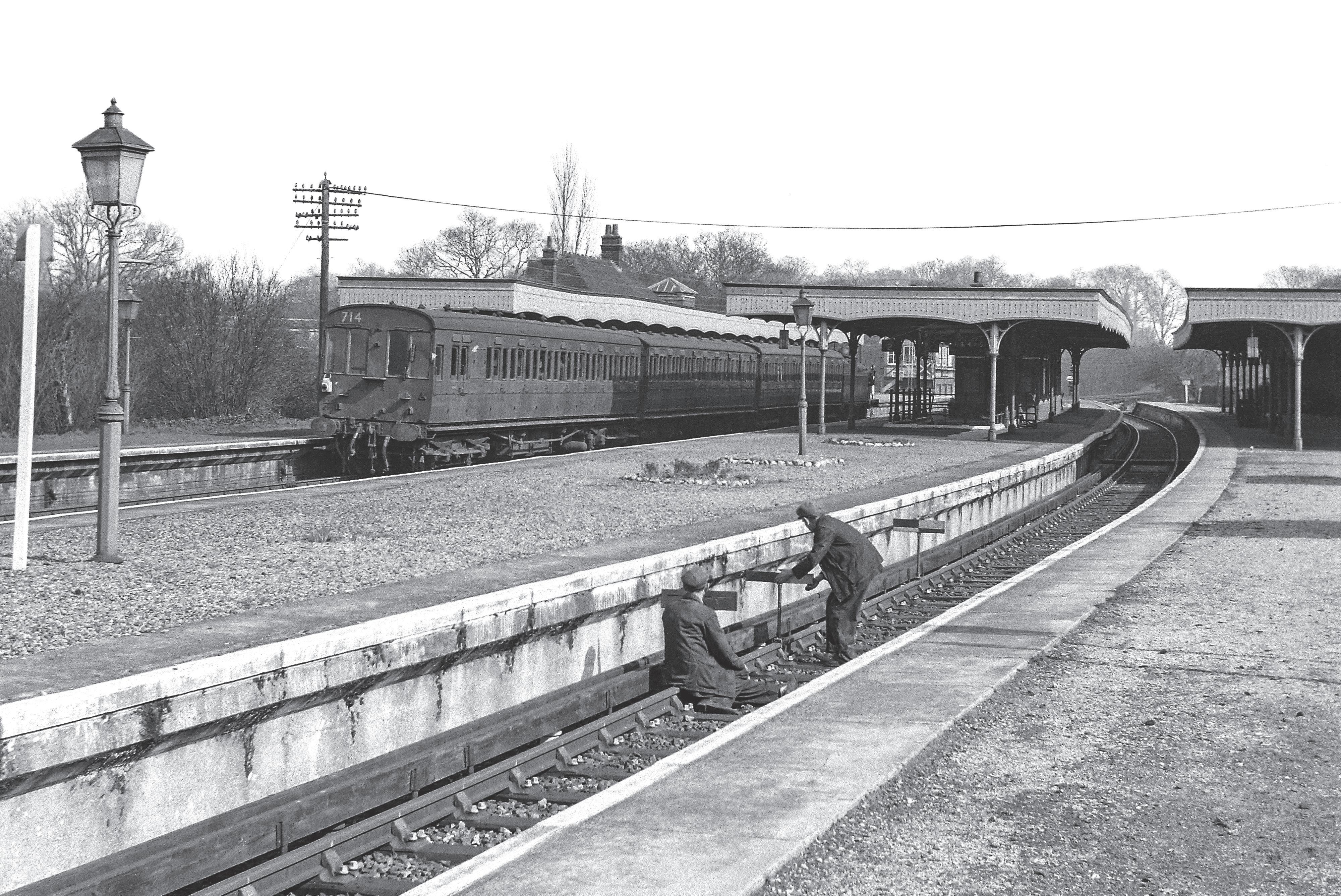
The workmen had to be careful, unless the current was temporarily switched off, for in this situation with a platform either side of the electrified running line it was not possible to ensure that the guarded conductor rail was placed furthest away from the platform edge. In the background of this view, taken on 24 March 1960, is a Horsham service headed by M7 No. 30049. As with many images of Christ’s Hospital the station seems to be untroubled by passengers. (Terry Gough)
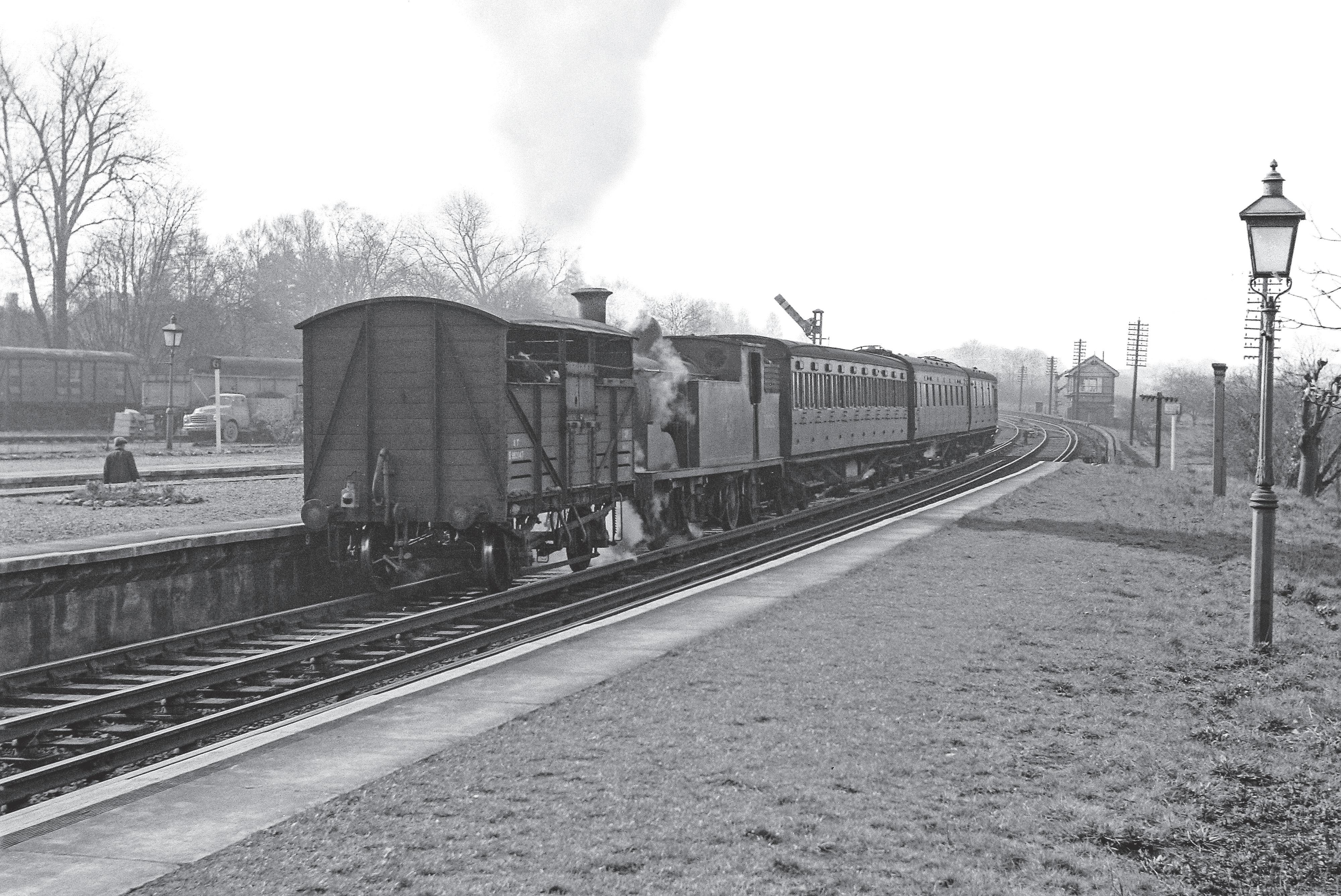
In March 1960 a ‘mixed’ service gets away from Christ’s Hospital propelled by Brighton based H Class No. 31530, which has a cattle wagon attached at the rear containing at least a couple of beasts who are no doubt somewhat agitated at this unusual mode of travel. Animal welfare was less of a concern in the past. (Terry Gough)

Above: Ten years earlier on 17 June 1956 closure was not contemplated as this lengthy 13 coach excursion from Peterborough to Hove passes close to Beeding with Class U1 No. 31904 and Bulleid Pacific No. 34047 Callington heading the train which contains a mixture of pre-war LNER coaching stock. (Peter Hay)
Right: And so back to Brighton where we began this journey and where N Class Mogul No. 31866, having been turned, prepares to return its railtour to London via Steyning on 5 December 1965. (Leslie Freeman)
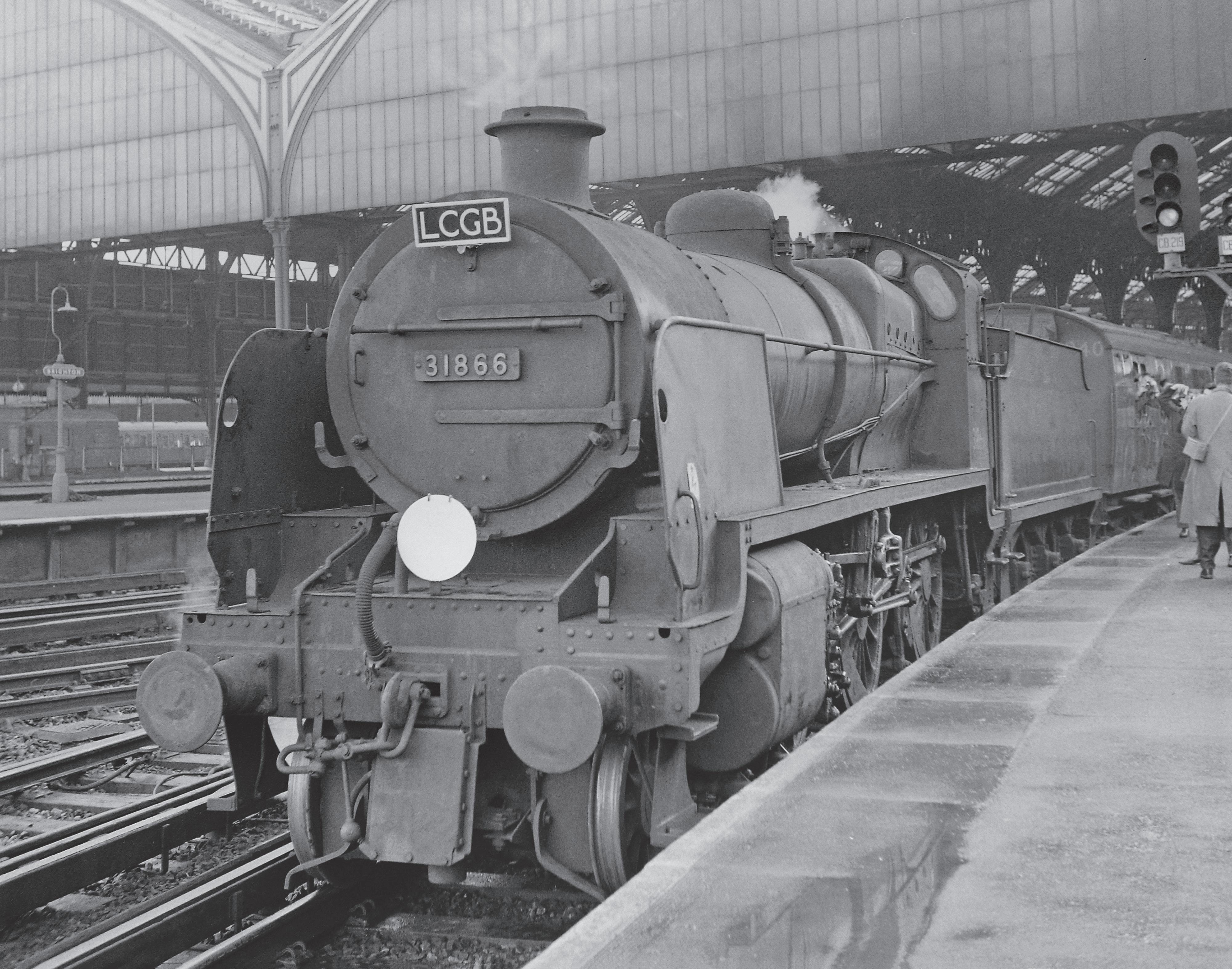
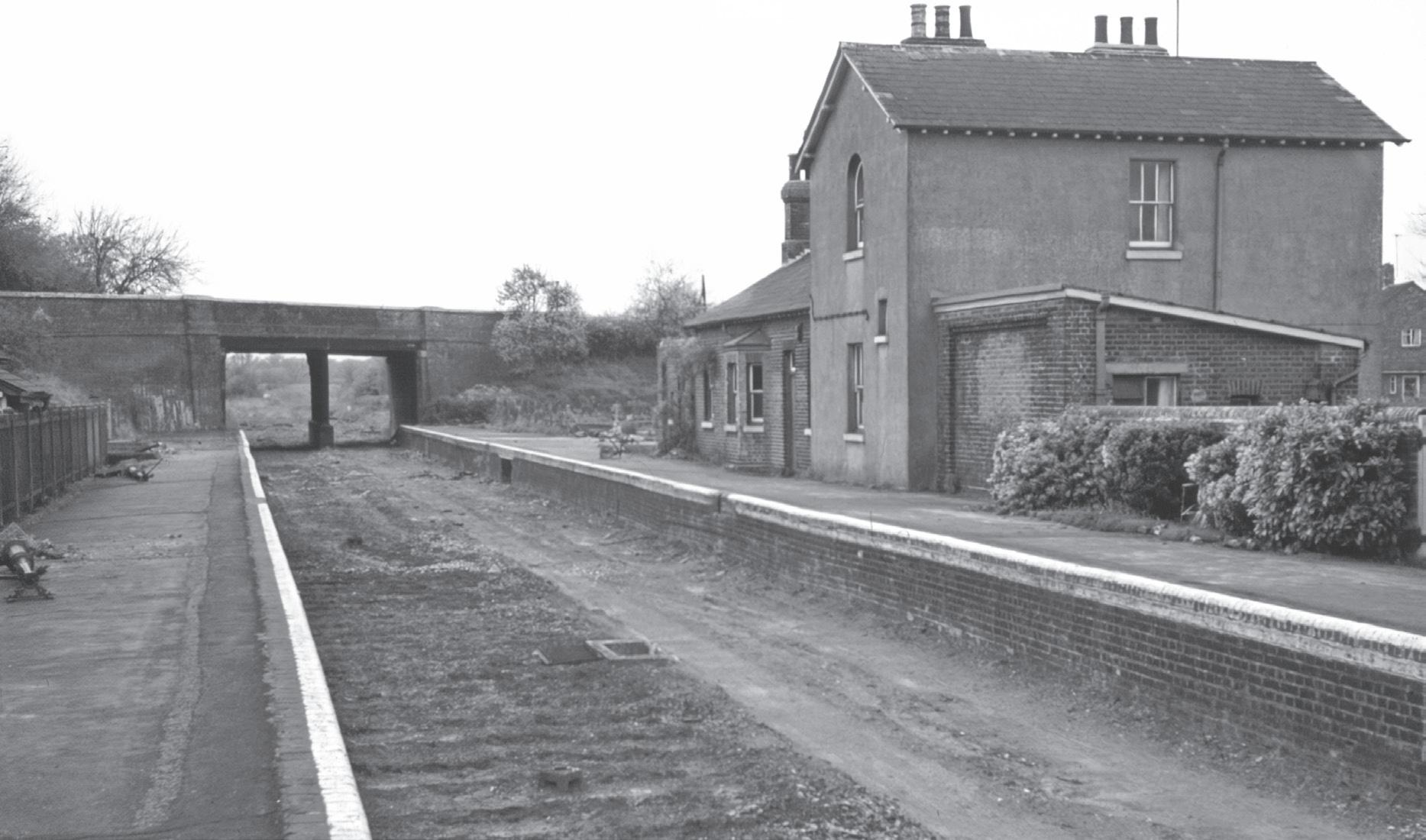
Had plans to electrify the route in 1946 not been abandoned then perhaps the double tracked cross country line from Horsham to Brighton might still be with us today. Closed in 1966 against a background of much local opposition and dubious BR financial figures, the line is still fondly remembered nearly 60 years later and is recalled here in these images mainly from the 1950s and 1960s, taken from the extensive Transport Treasury archive. This is the first volume in a duology, the second of which will cover the branch from Horsham to Guildford, both routes forming what was originally hoped would become a through route from the Midlands to the South Coast. But with such traffic never materialising, both lines remained two separately operated entities until the withdrawal of services.
ISBN 978-1-913893-50-7

£13.50
